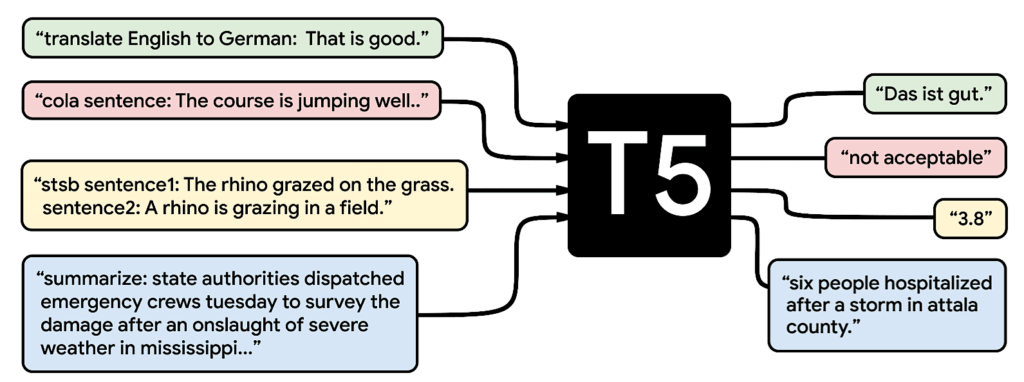Google’s algorithms are many, and greatly differ over time. All of these updates do, however, have one thing in common: They know how to send shivers down the spines of even the most talented SEO experts, who worry about having to completely overhaul their practices every single time. All this to say, the fact that the new algorithm, Google MUM, is all anyone seems to have been talking about since the spring of 2021 is hardly surprising.
Designed to replace BERT, this new iteration boasts advanced functionalities based on artificial intelligence and on an acute understanding of the natural language. This should help guide users towards more relevant answers to complex search queries. What is it exactly? How does Google MUM work? And how will this Google update impact SEO?
What is Google MUM?
Do you know what the “Multitask Unified Model” (MUM) is? No, it’s not a brand-new physical theory dreamt up to describe our Universe. Instead, it is the meaning behind the acronym that the latest Google algorithm update, set to launch within the next few months (or years?), adopted as its name.
As the successor of BERT, the Google MUM update is also based on high-performance artificial intelligence. And just like its older brother BERT, MUM aims to provide users with concrete and precise answers to long and complex queries.
Queries on Google are becoming increasingly complex
The Mountain View engineers began their work with one clear starting point: when a user performs a complex query (including several clauses and/or comparative expressions, for instance), it takes them eight queries on average to find the answer that matches their original search intent. These eight queries are just as many unavoidable steps they need to take to refine their search and finally get to the information that never came up with the previous results.
As it happens, the search queries formulated on Google are becoming increasingly complex – and comprehensive. This evolution is partly due to voice search, which is gaining in popularity and encourages users to voice out their questions using a more natural language. On average, 60% of users use the voice search functionality at lease once a day (59% ages 18-24, 65% ages 25-49, and 57% ages 50 and up, according to a PwC survey). BERT during its own time, and very soon Google MUM, strive to comply with this new way of looking for information.
What is a complex query?
A query may be considered “complex” for various reasons. Yet, three main factors emerge:
- The length (69.7% of queries typed into the search engines contain at least four words, according to Ahrefs).
- Several clauses being used (“I have done this; now how do I do that?”).
- When it is impossible – at least for now – to provide a single answer to the query.
The example used by Pandu Nayak, vice president of Search, during the Google MUM presentation was as follows:
“I’ve ascended Mount Adams and wish to hike Mount Fuji next fall. What should I do differently to prepare?”
It is indeed difficult to imagine finding a page perfectly optimised for this exact query. The task assigned to Google MUM consists in taking the complexity of the query into account and answering it in a way the matches the user’s original intent as closely as possible.
To better illustrate this principle, let’s look at another example: Your goal is to visit every capital in Europe, and you are currently planning for your next trip. A simple query could be “What are the best European capitals to visit?”. Google would give you a large number of answers, typically pages that describe several possible cities to discover, which you will need to look through to find more information. You could then formulate increasingly specific searches.
But here’s the thing: you have already visited quite a few European cities and you would like to target your Google search by excluding the ones you already know. At this point in time, the only way would be to look into different cities one by one and to see which ones might suit your expectations. Instead, the Google MUM update will make it possible to condense all these requirements under a single query, such as:
“I liked Paris and Prague, but not Berlin. Which EU capital will suit my tastes?”
Exactly as if you were talking to a sales agent at a travel agency and they gave you a clear answer… all in one go.
Google and the advanced understanding of search intent
Understanding a query – even a complex one – is one thing. But what truly matters is to understand what the user really meant when they formulated the query, namely: their intent, in order to provide as relevant an answer as possible. And that’s exactly what Google has been striving to do through its latest Google updates, particularly BERT in 2019, and now MUM.
The BERT algorithm (for “Bidirectional Encoder Representations from Transformers”) already leans on machine learning to better understand the context in which a query is formulated. It attempts to deduce the meaning of the terms based on where they are positioned within a group of words. For example, if I type “Apple”, I may either want to find nutrition information about apples or get the latest news about the tech brand. The algorithm uses the terms that surround the problematic element to infer the intent.
Google MUM also relies on a Transformer architecture, but it doesn’t stop there. One thousand times as powerful as BERT (according to Pandu Nayak), Google MUM’s ambition is to understand how human beings communicate to better interpret the results and offer suitable answers.
The method used here – the T5 framework (Text-To-Text Transfer Transformer) – combines the teachings and improvements from the Natural Language Processing models based on transfer learning (TL). In essence, most of the tasks are formulated in a format that uses text both as input and as output.

The chart below conveys how the T5 works. You can see that every task takes the shape of a text entry. The model is pre-trained to generate a target (output) text from the initial (input) text. These tasks include translation (in green), linguistic acceptability (in red), textual similarity (in yellow), and information synthesis (in blue). If you are passionate about the topic (and it doesn’t put you off), here is a guide produced by Google to explain transfer learning with T5.
To put it simply, Google MUM is an extension of BERT. It builds on the latter’s machine learning mechanisms and pushes them further. This improvement derives from three new capabilities: MUM is multimodal, multilingual, and multi-tasking.
Google MUM: a multimodal algorithm
What “multimodal” means in this context is that Google MUM is capable of understanding and extracting information from several types of content simultaneously. While the version currently being tested focuses on text and images, MUM should be able to treat video and audio formats in the same way in the years to come.
Two consequences:
- The algorithm is able to provide results from analysing several formats at the same time.
- The Internet user can formulate a query using various types of content.
Let’s take Google Lens as an example. This mobile application already makes it possible to generate a search from an image, be it a photo taken from a smartphone camera, or a picture extracted from the user’s medial gallery. What Google MUM promises is the ability to add a text or a voice query to this image and to ask the algorithm to perform a combined search. For instance, you could take a picture of a plate and ask Google whether it is safe to put it in the microwave.
Google MUM: a multilingual algorithm
For now, the answers given to a query are extracted from pages written in the language used to formulate it (except when the expression makes sense in several idioms) or in the language targeted in the settings.
Google MUM is designed to lead users towards high-quality sources of information in any of the 75 languages it masters. In more concrete terms, the algorithm is capable of interpreting results from resources produced in various languages, or even to generate content all by itself by instantly translating these resources in the user’s preferred language.
The goal? Overcoming the language barriers in order to offer more relevant search results. To get back to our previous example which involved queries about European cities, Google will be able to display information sourced from pages written in the languages of all the countries targeted through instant translation. This should help us uncover extremely comprehensive results that we simply couldn’t have obtained by any other means than perusing the pages in those languages.
Google MUM: a multi-tasking algorithm
Finally, Google MUM can process several tasks simultaneously. Of course, this is nothing new, as nowadays’ Google is capable of taking several criteria into account to come up with relevant results, such as the language used, the format of the content, the user’s location, or their search history.
Yet here again, MUM’s ambition is to take it much further by performing multiple tasks at the same time: keyword grouping, multilingual analysis, interpreting results in various content formats, instant translation, identifying related topics, video analysis, etc. This process allows the algorithm to work faster and to reduce wait time for the users, all while offering more comprehensive results that match search intents more closely.
How will Google MUM impact SEO?
Google MUM is currently undergoing a trial phase and no launch date has been set. The impact of this new Google algorithm on search engine optimisation (SEO) practices and digital marketing is therefore purely conjectural. With that said, given the information we currently have at our disposal and past algorithm updates from Google, one might hazard a few guesses.
Highlighting the most relevant results… and not necessarily the best optimised ones!
If we consider how the algorithm has evolved over the past few years, it is plain to see that Google is aiming to correct the way in which users access results.
The fact is that Internet users tend to focus on the first few SERP results, which are supposed to be the most relevant: If they are displayed at the top, aren’t they the best? This isn’t necessarily true, as the pages that rank highest are, above all else, the ones that were optimised most effectively. This means that quality resources could be sent down the abyss of SERPs for lacking sufficient optimisation, or for want of authority. Imagine if the most relevant answer to your question could be found on page 27 of Google’s results: you would never find it!
Google is increasingly trying to highlight results based on their relevance to the question being asked, rather than only as a reward for their great optimisation.
Google MUM seems to be heading in the same direction. Taking a larger number of criteria into account simultaneously, understanding several content formats, and being able to seek information in most languages are all capabilities that can be leveraged for the benefit of the Internet user, bringing forward more relevant pages. And why not encourage them to go look for results beyond the first few pages, through Google Lens, for instance (this is also the ambition of the “infinite scrolling” functionality implemented on Google’s mobile app)?
Working on SEO to satisfy users
For that reason, the launch of the Google MUM update shouldn’t change anything fundamentally for those who already practise a user-centric approach to SEO. A good way to absorb this new algorithm consists in keeping up with your efforts to promote…
- high quality content (in application of the EAT criteria: Expertise, Authority, Trust);
- relevant content (so that it provides a more precise answer based on the user’s intent, by working on the semantic field, for instance);
- voice search optimisation (which uses natural language for longer, more precise queries formulated as questions);
- improvement of the user experience (taking into account Google’s three new criteria: the Core Web Vitals);
- text, image, video, and audio file optimisation (as Google MUM is very likely to showcase visual and audio content, it’s worth optimising it as well as possible).
In other words, with Google MUM’s multimodal approach, all the elements of a page will be taken into account to provide relevant results for the users – and to try and ensure their satisfaction.
Google MUM is not here yet. But that shouldn’t stop you from preparing for it!












